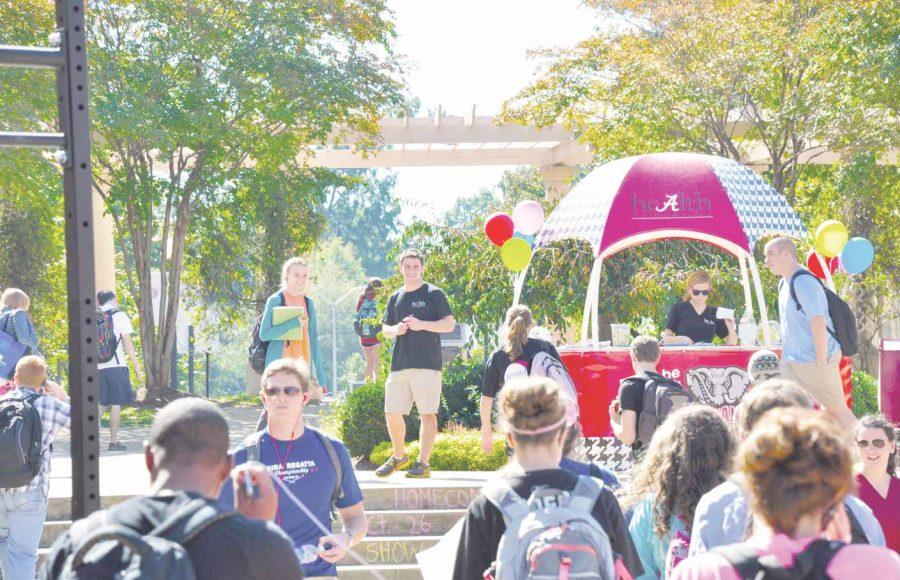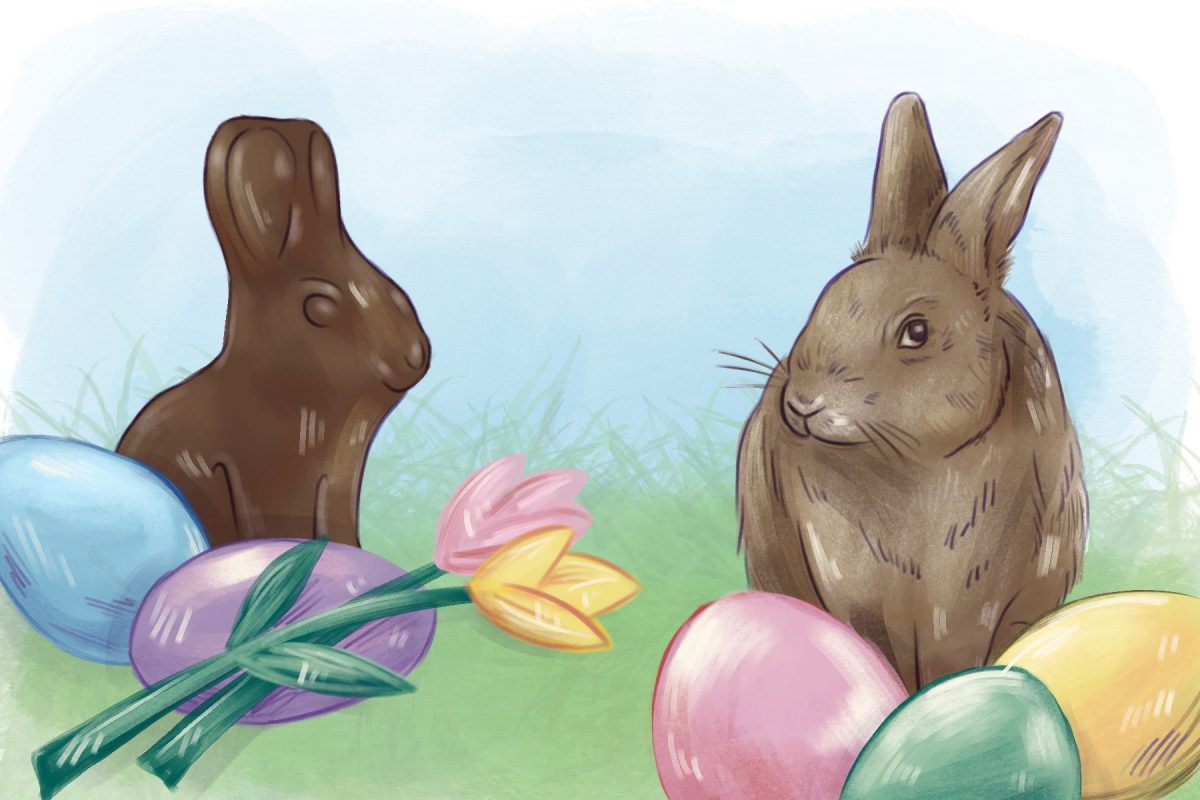Distributing T-shirts, buttons and, this week, bananas, Project Health uses swag to sway students into healthy habits, particularly through the Health Hut program. The Health Hut’s crimson and houndstooth tent travels all over campus, occupying high- traffic spots for maximum outreach.
“Many people know what the Health Hut is. They’ve seen it walking to class. They’ve seen it around campus. Health Hut has a very strong identity,” Reale Snorton, director of public relations for Project Health, said.
Health Hut interns greet students and encourage them to ask questions or participate in a game to learn about health, with the promise of prizes.
“One of the things that we’re working on right now is engaging more students on campus. Every semester, we try to increase the number of students we’re reaching and the number of students we’re engaging,” Olivia Hodge, coordinator of public relations for the Health Hut, said.
And so far the Health Hut has been successful in achieving this goal. Last semester, it recorded a total of 12,089 visits, but in the first week of this semester alone, the Hut had 2,852 visitors. Of last week’s visitors, 1,917 played the Hut’s health-themed games. The Health Hut also distributed 1,100 T-shirts in one day last week.
“We want to reach 50 percent of campus, or 15,000 students, with the Health Hut this semester,” Snorton said.
Students record these visits and impact statistics as part of their duties as Project Health interns.
“We’re trying to be as accurate as possible, so we’re trying to see how many people did actually visit and how many people took something away from it,” Jessica Vickery, assistant director of health education and promotion and Project Health advisor, said. “It’s never 100 percent, but at one point last week, we had 80 percent that played the game. We had lines of people waiting to do activities, to get a free T-shirt or a free water bottle.”
Project Health has two major divisions: the Health Hut and Health Ambassadors.
“They both evolved at different times,” Vickery said. “So, as Health Hut started to go into a maintenance level, where we kind of knew what we were doing, we were able to add the Health Ambassadors and revamp their position and what we do.”
Snorton said they are currently working to develop Health Ambassadors’ identity.
“Yes, people know that we do the residence halls, but not as many people know that we’re behind Healthy Hump Days. We’re in the Ferg; we’re in the Rec; we’re in residence halls every week. Or they don’t know that we’re the ones behind the Swagon,” Snorton said.
The Swagon was a program started last year that works like the “Cash Cab” TV show. Students can get a ride to class in a suped- up golf cart and win prizes by answering questions regarding weekly health topics.
The Health Hut and other Project Health initiatives won several accolades last year on the national, regional and campus levels, including Outstanding Prevention Program from the BACCHUS Network, a title only 3 programs receive nationally, for the Health Hut and for the Capstone Innovation award from the SOURCE for the Swagon.
“I thought it was a really great way to get involved on campus because the campus is so big, but when you work at the Health Hut, you get to meet so many people. You’re interacting with hundreds of people a day who you never would have talked to, and so it’s a good way to make the campus feel smaller,” Hodge said.
Students interested in getting involved in Project Health should visit projecthealth.ua.edu. Applications are set to go live at the end of September.









